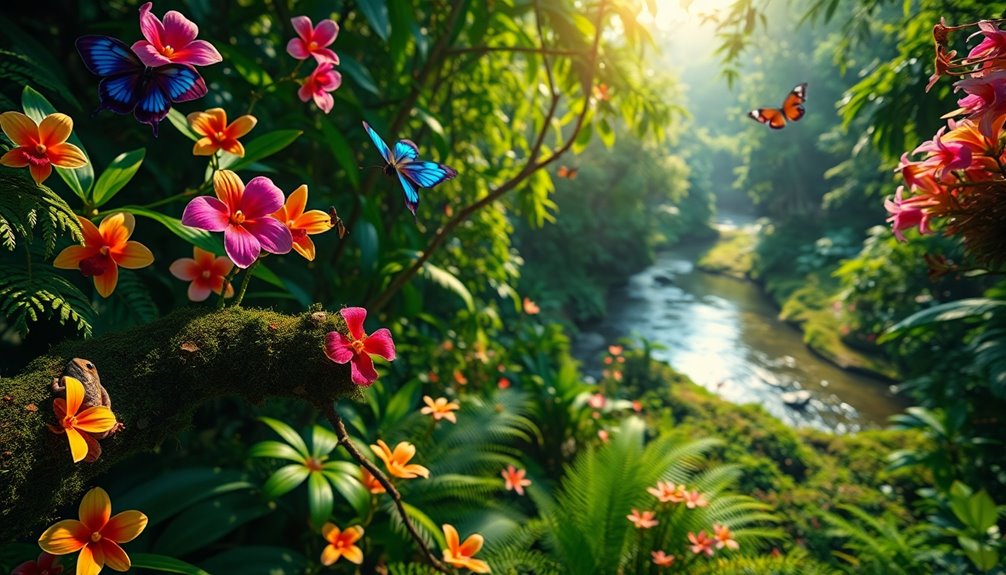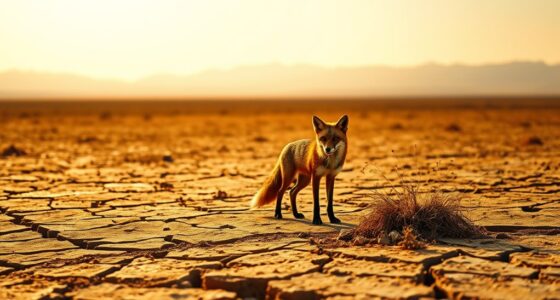Biodiversity is vital for maintaining healthy ecosystems, supporting economies, and ensuring community well-being. It includes the variety of species, genetic differences, and diverse habitats that contribute to ecological balance. However, human activities and climate change threaten this balance. By engaging in sustainable practices, supporting conservation efforts, and advocating for protective policies, you help preserve biodiversity. Discovering more about the specific strategies and innovations in conservation will empower you to make a significant impact.
Key Takeaways
- Biodiversity ensures ecosystem stability, contributing to essential processes like pollination and nutrient cycling, which support all life forms, including humans.
- Healthy ecosystems provide economic benefits through resources such as food, medicine, and tourism, highlighting the need for conservation investments.
- Human activities, including deforestation and pollution, threaten biodiversity, making it crucial to implement sustainable practices to protect habitats.
- Community engagement in conservation efforts, like supporting local organizations and participating in citizen science, fosters collective action for biodiversity protection.
- Education and awareness about biodiversity's importance can mobilize communities to advocate for policies that promote sustainability and habitat protection.
Understanding Biodiversity: Definition and Components

Biodiversity is the variety of life on Earth, encompassing everything from the smallest microorganisms to the largest mammals. It includes three main components: genetic diversity, species diversity, and ecosystem diversity.
Genetic diversity refers to the variations within species, which helps populations adapt to changing environments. Species diversity looks at the different species within a particular habitat or ecosystem, highlighting the importance of each in maintaining balance.
Ecosystem diversity involves the variety of habitats, communities, and ecological processes, ensuring that ecosystems function effectively. Understanding these components is crucial because they illustrate how interconnected life forms are, and how each plays a role in the larger tapestry of our planet's health.
Protecting biodiversity ensures the resilience of life for future generations.
The Role of Biodiversity in Ecosystem Functioning
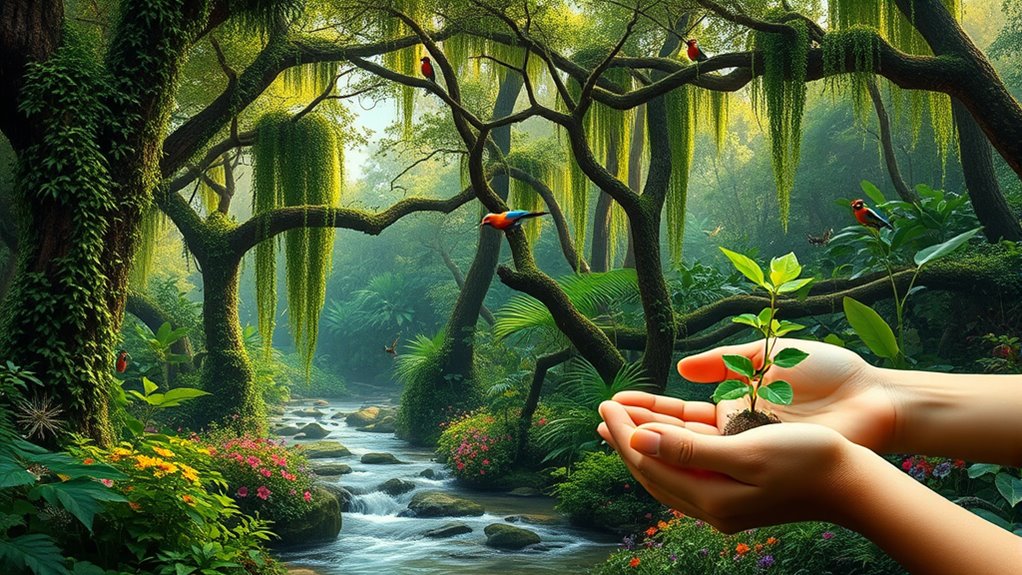
As ecosystems thrive on the intricate web of life, their functioning heavily relies on the diverse species that inhabit them. Each species plays a unique role, contributing to processes like pollination, nutrient cycling, and habitat stability.
When you maintain biodiversity, you enhance the resilience of ecosystems, allowing them to adapt to changes and recover from disturbances. For instance, a diverse plant community can better withstand pests and diseases, promoting healthier soil and cleaner air.
You'll also find that species interactions, such as predator-prey relationships, help regulate populations and maintain balance. By protecting biodiversity, you're not just preserving species; you're ensuring that ecosystems continue to function effectively, supporting the life forms that depend on them, including ourselves.
The Economic Value of Biodiversity
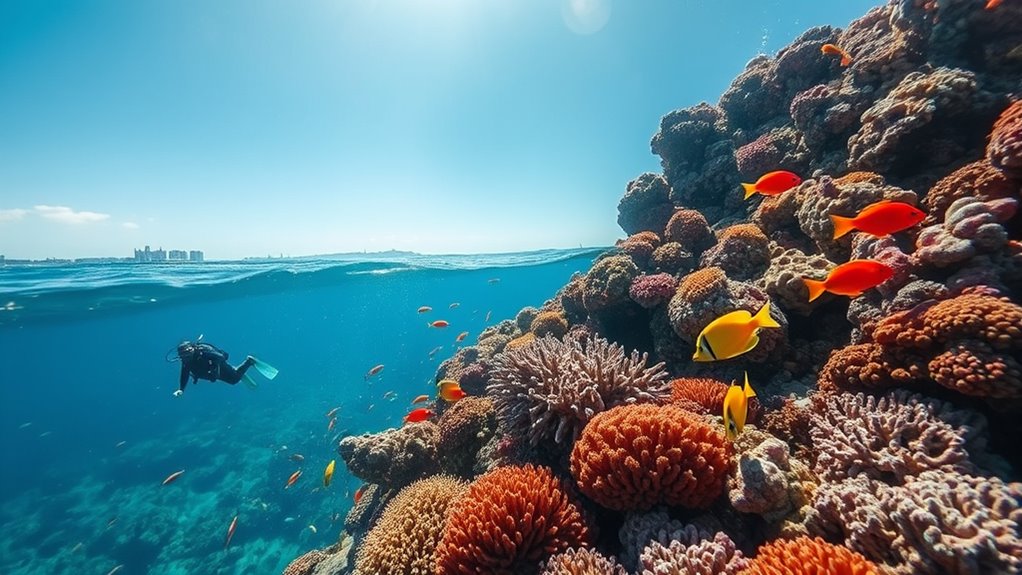
Nature's bounty isn't just a source of beauty; it also provides immense economic value. You rely on biodiversity for essential resources like food, medicine, and raw materials.
Healthy ecosystems support agriculture, fisheries, and tourism, all vital to local and global economies. When you protect diverse species, you're safeguarding the foundation of these industries.
Furthermore, ecosystems offer services such as pollination, water purification, and climate regulation, which save economies billions annually. By investing in conservation, you're not just preserving nature; you're also ensuring sustainable growth and resilience for future generations.
Recognizing the economic benefits of biodiversity can motivate communities and governments to take action, promoting policies that prioritize ecological health and sustainable practices. Your choices today impact tomorrow's economic stability.
Threats to Biodiversity: Human Impact and Climate Change

While you enjoy the benefits of a rich ecosystem, human activities and climate change pose significant threats to biodiversity. Deforestation, urbanization, and pollution disrupt habitats, forcing many species into extinction.
Overfishing and unsustainable agriculture deplete resources, endangering entire ecosystems. As climate change accelerates, temperature shifts and extreme weather events further challenge species' survival.
You may notice the decline in pollinators or the migration of animals, signaling a loss of balance in nature. These changes not only affect wildlife but also jeopardize your access to clean air, water, and food.
It's essential to recognize these threats and take action. By reducing your carbon footprint, supporting conservation efforts, and advocating for sustainable practices, you can help protect biodiversity for future generations.
The Importance of Genetic Diversity
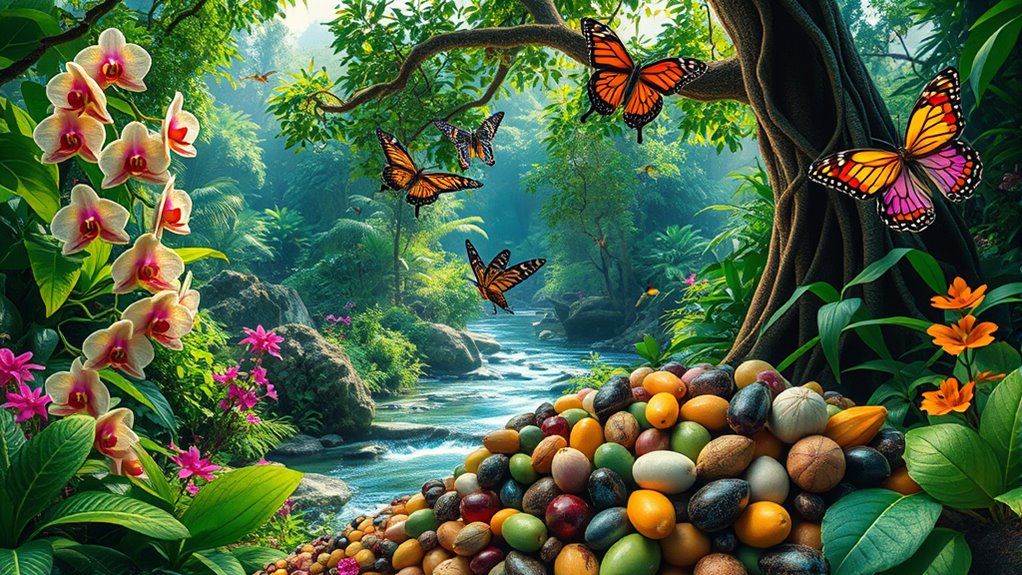
Genetic diversity plays a vital role in the health and resilience of ecosystems. It ensures that species can adapt to changing environments, resist diseases, and recover from disturbances. When you protect genetic diversity, you're safeguarding a species' ability to thrive in various conditions.
For instance, plants with diverse genetic traits can withstand pests and climate fluctuations better than uniform crops. This diversity also supports ecosystem functions, such as nutrient cycling and habitat stability. By conserving diverse genetic materials, you contribute to the overall stability and productivity of ecosystems.
Whether through habitat restoration or supporting conservation programs, you can make a difference. Embracing and promoting genetic diversity today is crucial for a sustainable tomorrow for all living organisms.
Biodiversity and Human Health
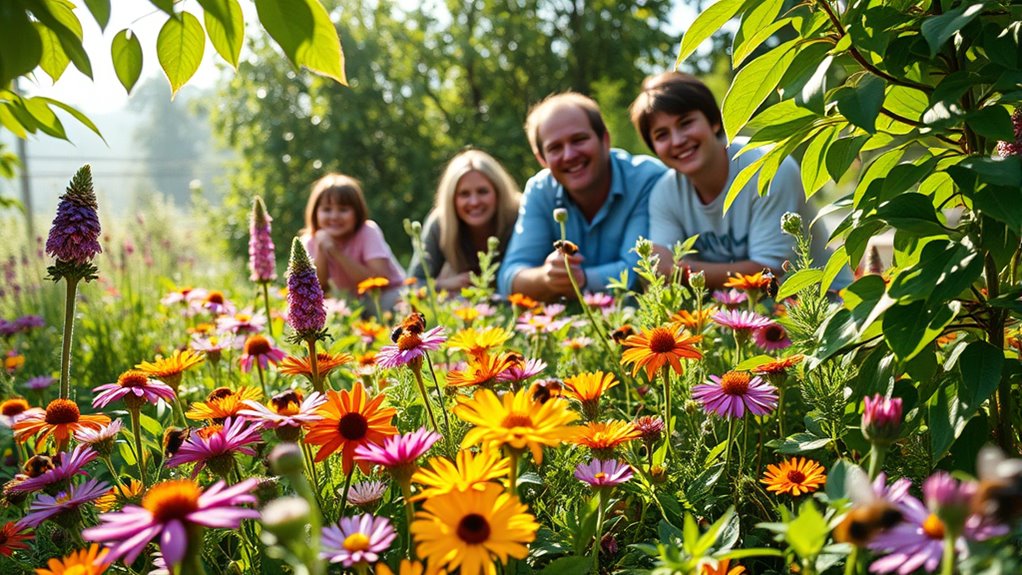
Biodiversity significantly impacts human health, as it provides essential resources for medicine, nutrition, and overall well-being. A diverse range of plants and animals contributes to a balanced diet, ensuring you get vital nutrients and reducing the risk of diseases.
Many medicines, including antibiotics and cancer treatments, originate from natural compounds found in various species. Additionally, healthy ecosystems regulate air and water quality, which are crucial for your health.
Biodiversity also plays a role in mental well-being; spending time in nature can reduce stress and improve mood. When you protect biodiversity, you're not just saving species; you're safeguarding your own health and that of future generations.
Embracing biodiversity ensures a resilient environment that supports life in all its forms.
Conservation Strategies for Protecting Biodiversity
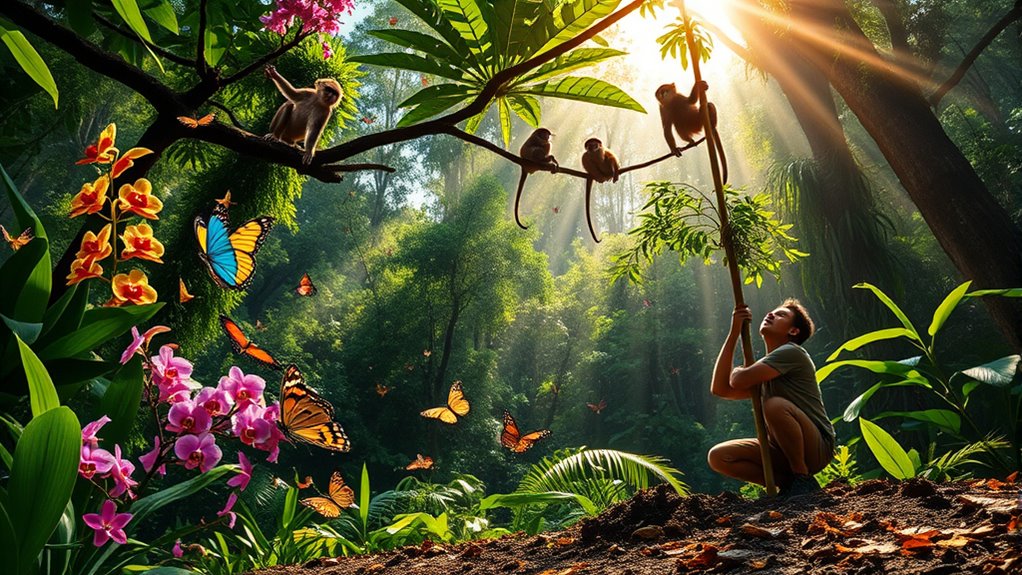
To effectively protect biodiversity, implementing targeted conservation strategies is crucial.
Start by promoting sustainable practices in your community, such as reducing waste and using resources wisely. Support local conservation organizations that focus on habitat restoration and species protection.
Promote sustainability in your community by reducing waste and supporting local conservation efforts for habitat and species protection.
You can participate in citizen science projects, helping researchers gather valuable data about local ecosystems. Educate others about the importance of biodiversity and advocate for policies that protect endangered species and their habitats.
Additionally, consider your own consumption habits: choose eco-friendly products and support businesses that prioritize sustainability.
The Role of Protected Areas and Reserves
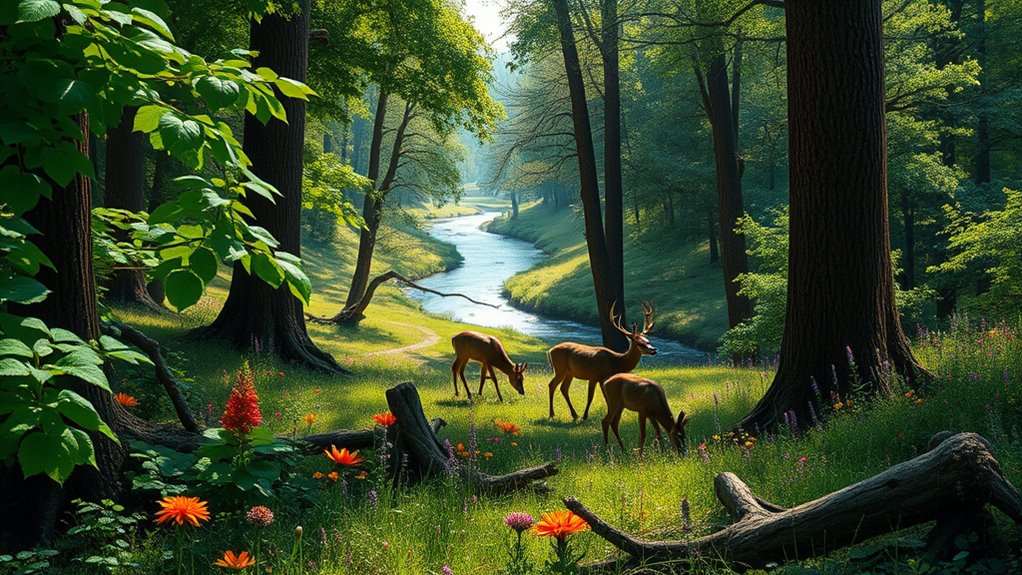
While many factors threaten biodiversity, protected areas and reserves play a vital role in safeguarding ecosystems and the species that inhabit them. These designated spaces act as safe havens, allowing flora and fauna to thrive without the pressures of human activity.
When you support or visit these areas, you're contributing to the preservation of essential habitats and the protection of endangered species. Protected areas also help maintain ecological processes, ensuring clean air and water while mitigating climate change impacts.
Community Involvement in Biodiversity Conservation
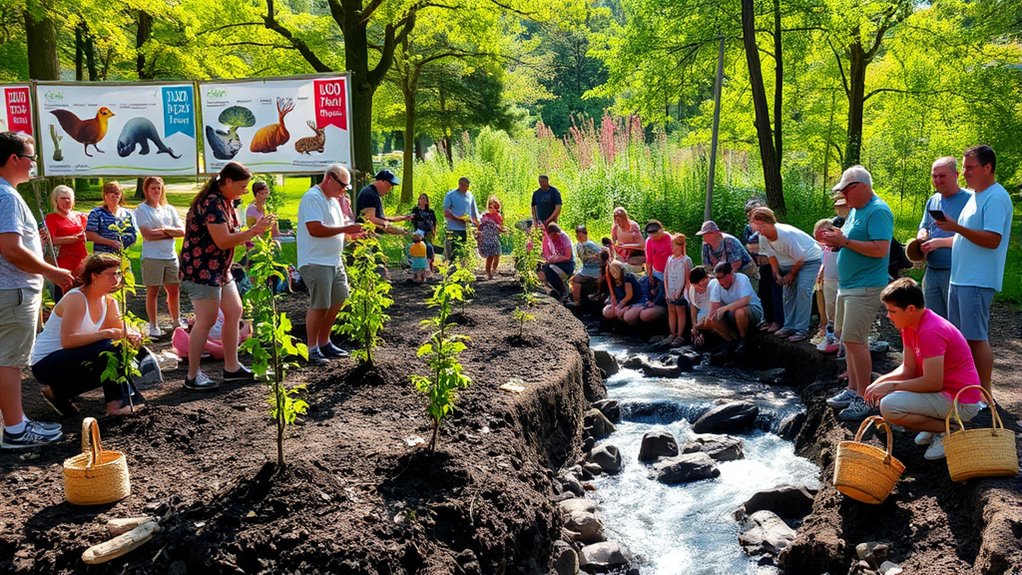
As communities become more aware of the importance of biodiversity, their involvement in conservation efforts has never been more crucial.
You can play a vital role by participating in local initiatives, such as tree planting, wildlife monitoring, or habitat restoration. Engaging in community workshops can also help you understand the delicate ecosystems in your area and how to protect them effectively.
Participate in local initiatives like tree planting and wildlife monitoring to protect your community's delicate ecosystems.
Collaborating with local organizations fosters a sense of ownership and responsibility towards your environment. Additionally, advocating for sustainable practices within your community encourages others to join the cause.
Remember, every small action counts; whether it's reducing plastic use or supporting local conservation programs, your efforts contribute to preserving biodiversity for future generations.
Together, you can make a significant impact!
Future Directions for Biodiversity Protection
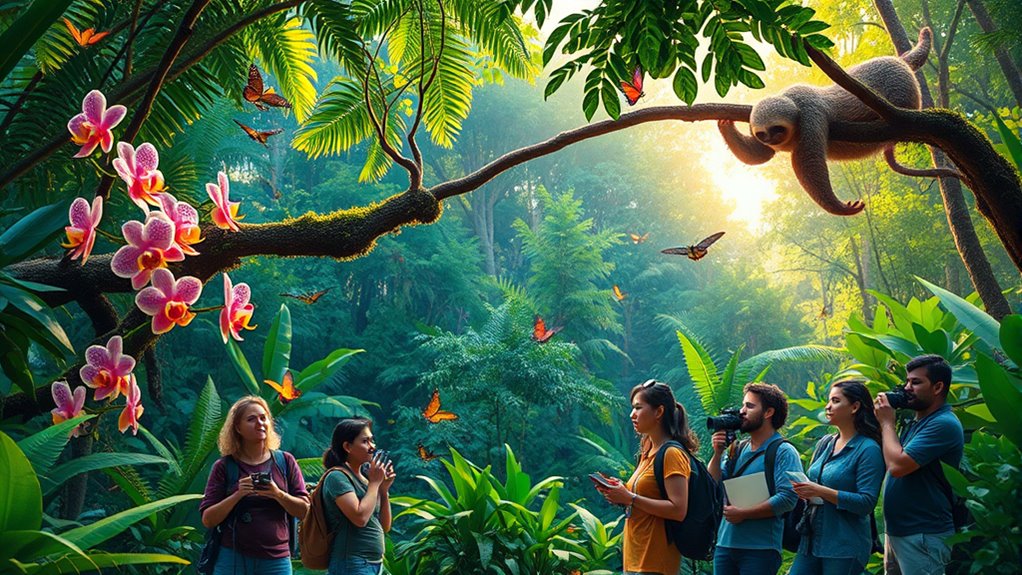
Given the pressing challenges posed by climate change, habitat loss, and pollution, innovative strategies for biodiversity protection are essential.
You can play a key role in promoting sustainable practices in your community. Support local conservation programs and advocate for policies that prioritize green spaces and wildlife corridors.
Embrace technology, like biodiversity monitoring apps, to track local species and their habitats. Participate in citizen science projects that gather valuable data for researchers.
Educate yourself and others about the importance of native species and the threats they face. Collaborating with organizations focused on habitat restoration can amplify your impact.
Frequently Asked Questions
How Does Biodiversity Affect Cultural Practices and Traditions?
Biodiversity shapes your cultural practices and traditions in many ways. It influences your cuisine, art, and rituals, often reflecting the natural world around you.
For instance, local plants and animals play a key role in traditional dishes and ceremonies, connecting you to your heritage.
When you embrace and protect diverse ecosystems, you ensure that these cultural expressions can thrive, preserving not just nature, but also the unique stories and identities that define your community.
What Are the Psychological Benefits of Biodiversity to Humans?
Imagine walking through a lush forest, surrounded by vibrant colors and the soothing sounds of nature.
That sense of peace isn't just a feeling; it's your mind benefiting from biodiversity. Research shows that spending time in diverse ecosystems can reduce stress, improve mood, and enhance overall mental well-being.
When you connect with various plants and wildlife, you're not just appreciating beauty; you're nurturing your psyche, boosting creativity, and finding balance in life.
Can Urban Areas Contribute Positively to Biodiversity?
Yes, urban areas can contribute positively to biodiversity.
You'll find that well-planned green spaces, like parks and community gardens, attract various species, promoting habitats within the city.
By incorporating native plants and creating wildlife corridors, you're enhancing the ecological balance.
Engaging with local initiatives can help improve urban environments, making them more biodiversity-friendly.
Every small effort counts, so your actions can lead to a healthier and more vibrant urban ecosystem.
How Does Biodiversity Impact Climate Resilience?
Imagine biodiversity as nature's safety net, catching us when climate storms rage.
It plays a crucial role in climate resilience by maintaining ecosystem balance, which supports everything from water filtration to carbon storage.
When you protect diverse species, you strengthen their ability to adapt to changing conditions.
This interconnected web of life not only buffers against extreme weather but also boosts food security and enhances community well-being, making your world a healthier place.
What Role Do Indigenous Practices Play in Biodiversity Conservation?
Indigenous practices play a crucial role in biodiversity conservation by integrating traditional knowledge with sustainable land management.
You'll find that these practices often promote the use of native species and respect local ecosystems, fostering resilience in habitats.
By collaborating with indigenous communities, you can support methods that have been refined over generations.
These approaches not only enhance biodiversity but also strengthen cultural ties and ensure that ecosystems thrive for future generations.
Conclusion
As you stand on the edge of a vibrant forest, the rustling leaves whisper secrets of countless species, each playing a vital role. Imagine a world where this beauty fades, where the colors dull and silence reigns. You hold the power to change this fate. By embracing conservation efforts and championing biodiversity, you can ensure that future generations experience the wonder of nature's tapestry. Will you take that step, or let the silence grow louder?
